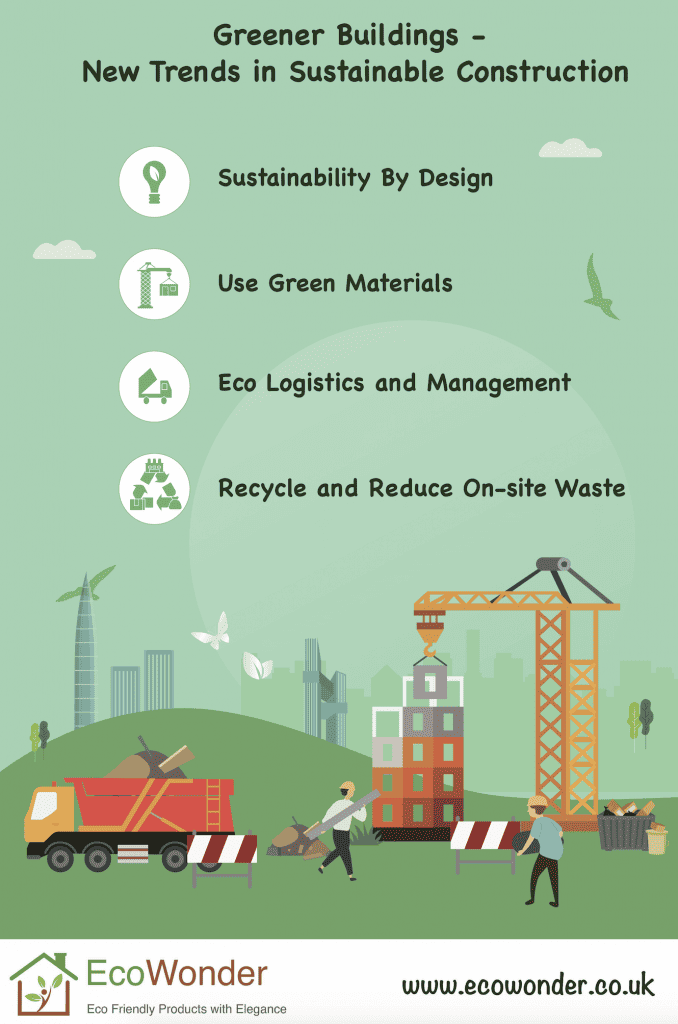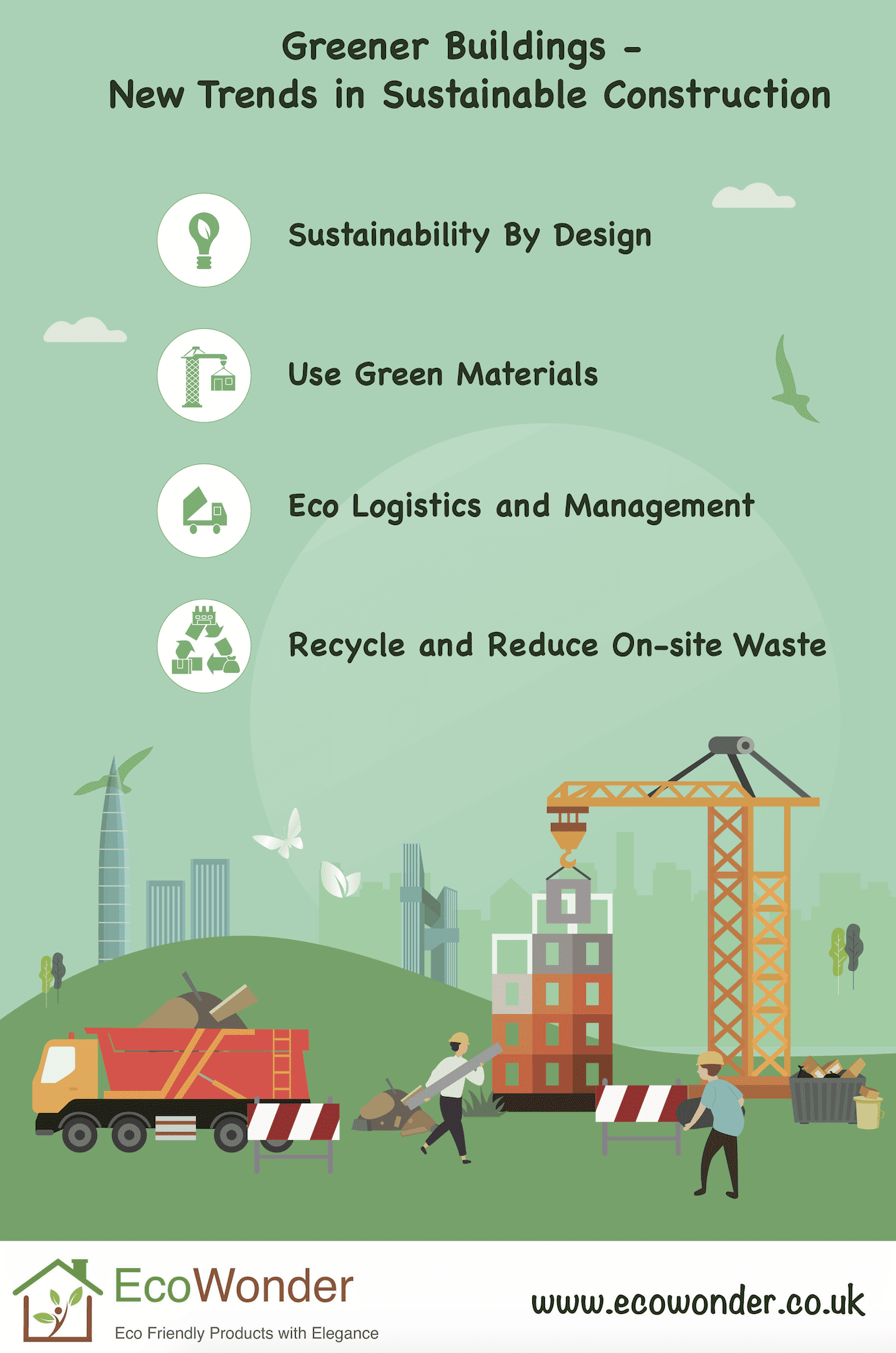The construction industry, by its very nature, is a massive consumer of raw materials and natural resources. But with growing concerns over climate change and the finite nature of these resources, there is increasing pressure on construction firms to reduce their environmental impacts.

What Is Sustainable Construction and Why Is Important?
Sustainable construction means building with renewable and recyclable resources and materials. During construction projects, care must be taken to reduce waste and energy consumption where possible and protect the natural environment around the site. A sustainable construction project must end with an environmentally friendly building or environment. Sustainable construction methods include:
- using renewable and recyclable materials
- reducing the embodied energy in building materials
- reducing the energy consumption of the finished building
- reducing on-site waste
- protecting the natural habitats during and after the construction phase.
From energy usage to emissions, the construction industry has a huge impact on the environment. According to statistics, building and construction works use:
- 25-40% of total energy
- 30% of raw materials
- 30-40% of global greenhouse gas emissions
- 30-40% of solid waste generation.
This is why sustainable construction needs urgent actions to develop new solutions.
The Challenges of Sustainable Construction.
Adopting sustainable construction methods is not an overnight process. The attitudes of the industry and available budget will be the most significant constraint or enabling factor. There is a perception that sustainable construction is very expensive, which can make it seem the less attractive option. Almost 50% of firms stated that they expected green buildings to incur higher first costs.
Lack of visibility is another major issue when it comes to monitoring sustainable practices in the building processes as well as with relevant subcontractors and supply chains. For instance, when it comes to sustainable sourcing of required raw materials, just over half (55%) of engineering and construction companies have significant or complete visibility into their own processes, and only 16% have the same visibility into their suppliers’ processes.
Current Movements of Sustainable Construction
With current awareness and interest in Corporate Social Responsibility (CSR), and increased regulations are pushing engineering and construction companies to look for more circular and sustainable solutions. Advances in technology are also offering new possibilities in terms of embodied energy use and building energy needs. Construction is playing its part in this by the following initiatives.
ISO14001 Certification
ISO 14001 Environmental Management is a standard for a company’s Environmental Management Systems. It aims to reduce waste management costs and shows commitment to protecting the environment. It also helps resource efficiency, which is very relevant in construction when it comes to materials used.
Sustainability By Design
Architects and engineers are designing more energy-efficient buildings with the help of technology, and that is putting increasing pressure on construction companies to digitize. More than half of engineering and construction respondents use mobile technology during the design phase, and maintenance processes. 3D printing technology also significantly reduce carbon emission in modelling and manufacturing process.
New Materials Used in Sustainable Construction
There are many new materials which construction companies can use to improve sustainability and reduce their carbon footprint, such as:
· Sustainable concrete
Concrete is a widely used synthetic material, but also one of the most environmentally unfriendly. Its manufacture alone is responsible for about 5% of global carbon dioxide (CO2) emissions. Fortunately, many companies are now exploring ways to reduce emissions by creating alternatives with plastic and other recyclables, which can reduce the carbon dioxide production by almost 50%.
· Recycled plastic
Plastic is fast becoming a sustainable construction material which is relatively easy to obtain thanks to an abundance of it existing in most societies. In some places, plastic and other rubbish are turned into concrete replacements, reducing greenhouse gasses, and helping to stop landfills becoming overrun with materials.
· Mud bricks & wool bricks
Bricks use kiln-fires to increase their strength resulting in pollution through greenhouse gases, but in 2010 researchers from the Schools of Architecture at the University of Seville, Spain and the University of Strathclyde in Glasgow, UK found new and greener ways to produce bricks just as strong, with untreated clay or wool as part of their composition.
Long Term Benefits of Greener Buildings
Naturally, adopting sustainable construction methods will reduce your organisation’s impact on the environment. The quality of the design and its sustainability can have long term reputational and corporate social responsibility benefits. Sustainable construction is sometimes criticised for using expensive materials, but the truth of the matter is that green buildings do come with lower operating costs. Now is the time to take actions to set sustainability commitments and adopt sustainable practices in construction industry.






